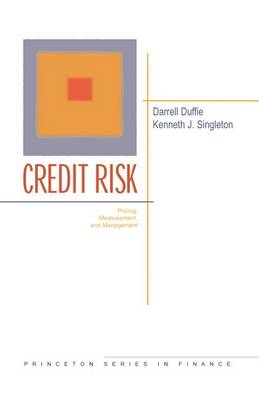Princeton Series in Finance
2 total works
In this book, two of America's leading economists provide the first integrated treatment of the conceptual, practical, and empirical foundations for credit risk pricing and risk measurement. Masterfully applying theory to practice, Darrell Duffie and Kenneth Singleton model credit risk for the purpose of measuring portfolio risk and pricing defaultable bonds, credit derivatives, and other securities exposed to credit risk. The methodological rigor, scope, and sophistication of their state-of-the-art account is unparalleled, and its singularly in-depth treatment of pricing and credit derivatives further illuminates a problem that has drawn much attention in an era when financial institutions the world over are revising their credit management strategies. Duffie and Singleton offer critical assessments of alternative approaches to credit-risk modeling, while highlighting the strengths and weaknesses of current practice. Their approach blends in-depth discussions of the conceptual foundations of modeling with extensive analyses of the empirical properties of such credit-related time series as default probabilities, recoveries, ratings transitions, and yield spreads.
Both the "structura" and "reduced-form" approaches to pricing defaultable securities are presented, and their comparative fits to historical data are assessed. The authors also provide a comprehensive treatment of the pricing of credit derivatives, including credit swaps, collateralized debt obligations, credit guarantees, lines of credit, and spread options. Not least, they describe certain enhancements to current pricing and management practices that, they argue, will better position financial institutions for future changes in the financial markets. Credit Risk is an indispensable resource for risk managers, traders or regulators dealing with financial products with a significant credit risk component, as well as for academic researchers and students.
Both the "structura" and "reduced-form" approaches to pricing defaultable securities are presented, and their comparative fits to historical data are assessed. The authors also provide a comprehensive treatment of the pricing of credit derivatives, including credit swaps, collateralized debt obligations, credit guarantees, lines of credit, and spread options. Not least, they describe certain enhancements to current pricing and management practices that, they argue, will better position financial institutions for future changes in the financial markets. Credit Risk is an indispensable resource for risk managers, traders or regulators dealing with financial products with a significant credit risk component, as well as for academic researchers and students.
This is a textbook for postgraduate students and researchers on the theory of asset pricing and portfolio selection in multi-period settings under uncertainty. The asset pricing results are based on three increasingly restrictive assumptions: absence of arbitrage, single-agent optimality and equilibrium. These results are unified with two key concepts, state-prices and martingales. Technicalities are given relatively little emphasis so as to draw connections between these concepts and to make plain that the similarities between discrete and continuous-time models are based on Brownian motion. Examples include the Black-Scholes option pricing model, Lucas' single-agent Markov asset pricing model, Merton's problem of optimal portfolio and consumption choice in a continuous-time setting, the Harrison-Kreps theory of equivalent martingale measures, Breeden's consumption-based capital asset pricing model, and the term structure model of Cox, Ingersoll and Ross. Numerical solution techniques include "binomial" methods, Monte Carlo simulation and finite-difference methods for solving partial differential equations.
Each chapter provides extensive problem exercises and notes to the literature.
Each chapter provides extensive problem exercises and notes to the literature.

